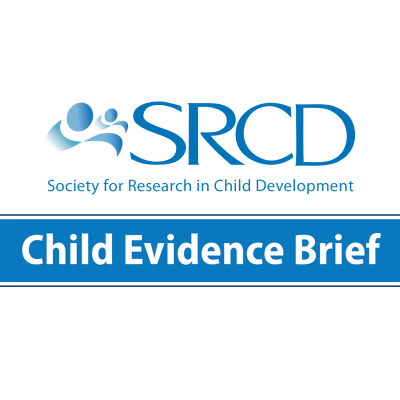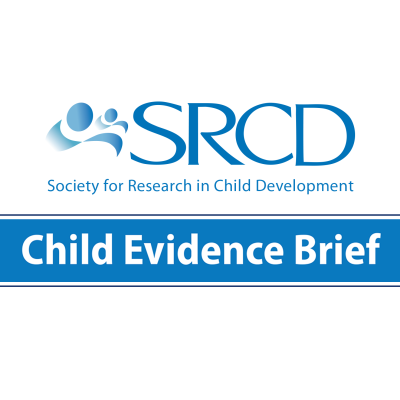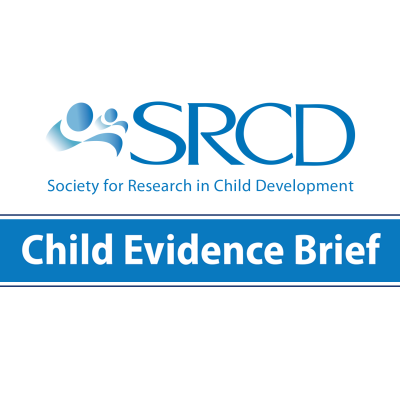Federal Expenditures on Children: What Budget Policy Means for Children's Policy
Social Policy Report Brief, Volume 29, Issue 1
Why Does This Matter?
Policymakers and the public need to know how public resources are being spent to understand who will be affected by potential changes in spending, as well as what the long-term consequences of changes in spending and investment could be. Investments in children’s health, education, and overall well-being pay high dividends for taxpayers and the economy as a whole: High-quality early childhood programs and K-12 education, stable housing, and adequate nutrition help children become healthy adults who can support themselves and contribute to economic growth.
Background
- The nation’s financial choices—ongoing annual appropriations, scheduled growth in mandatory programs, budgetary reforms, economic stimulus packages—affect expenditures on children.
- Government programs can take the form of discretionary spending, where funding levels are set annually by congressional actions (e.g., Head Start), mandatory spending, which does not go through the annual appropriations process but is governed by program rules and the number of qualifying individuals or families applying for services (e.g., Medicaid), or tax expenditures, which also depend on the number of qualifying individuals or families (e.g., Earned Income Tax Credit).
- The effects of financial choices on children depend on critical details, such as which types and categories of spending are cut or increased most (e.g., defense or non-defense, mandatory or discretionary), which programs are targeted for reform (e.g., retirement programs or low-income programs), and whether revenues change.
- This brief and the longer report on which it is based draw from the Kids’ Share report series, a product of the Urban Institute. Kids’ Share analyzes outlays (spending) from federal programs that benefit children and tax expenditures (reductions in the taxes paid by individuals or families from child-related tax provisions). No report of this kind is currently generated by the federal government.
What the Research Says
- Total federal outlays for all purposes, not just children, have increased nearly sevenfold since 1965. The most dramatic growth in outlays—
- in real dollars and as a share of the federal budget—over the past 50 years was in Medicare, Medicaid, and Social Security spending on adults, particularly the elderly. Excluding amounts spent on children, spending on these programs grew from 11% of the federal budget ($64 billion) in 1960 to 43% ($1.5 trillion) in 2013.
- Overall spending on children has also grown, though to a lesser degree, climbing from 3% ($18 billion) in 1960 to 10% ($351 billion) in 2013. Federal spending on children peaked at $499 billion in 2010.
- As a share of gross domestic product between 2013 and 2024, discretionary spending on children is projected to decline 31%, tax provisions 19%, and mandatory spending 9%.
- The federal government provides 76% of public investment in infants and toddlers, mainly through health care.
- The largest part of government investments in children is state and local spending, which goes primarily to public education for children ages 6 and older.
Implications for Policy
- Three factors drive changes in spending on children: growth in spending on Medicare, Medicaid, and Social Security for adults, primarily the elderly; decisions to not increase revenues to fund increasing health, disability, and retirement programs; and related growth in interest payments on the debt. (See figure below.)
- While Medicare, Medicaid, and Social Security have helped reduce poverty and vulnerability among the elderly, Medicare and Social Security also benefit elderly who aren’t financially vulnerable. To support the well-being of children, we must balance our commitment to supporting elderly citizens with wise investments in children.
- Education, early education and care, social services, training, and housing are the most vulnerable areas of spending on children. But all categories of federal spending on children except health are projected to decline by 2024.
- Without adequately funded education, nutrition, housing, early education and care, health and other supports, the foundation of children’s well-being is at risk. When children grow up without adequate supports, they can’t contribute to economic growth.

This brief summarizes a longer Social Policy Report, "Federal Expenditures on Children: What Budget Policy Means for Children's Policy" by Heather Hahn, Senior Fellow at the Urban Institute. The report draws heavily from the Urban Institute’s Kids’ Share series of reports, which assesses budgetary policy toward children by regularly tracking spending on children. Kids’ Share reports are funded by the Annie E. Casey Foundation and First Focus, as well as related research funded by the Foundation for Child Development for spending by income and age group. The author acknowledges the other researchers who worked on various Kids’ Share reports, including, most recently, Sara Edelstein, Julia Isaacs, Ellen Steele, C. Eugene Steuerle, Katherine Toran, and Tracy Vericker. The conclusions expressed are those of the author and do not necessarily reflect those of officers or trustees of the Urban Institute or any organizations that provide financial support to the Institute.


